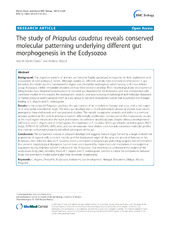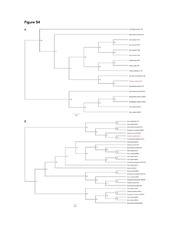| dc.description.abstract | Background The digestive systems of animals can become highly specialized in response to their exploration and occupation of new ecological niches. Although studies on different animals have revealed commonalities in gut formation, the model systems Caenorhabditis elegans and Drosophila melanogaster, which belong to the invertebrate group Ecdysozoa, exhibit remarkable deviations in how their intestines develop. Their morphological and developmental idiosyncrasies have hindered reconstructions of ancestral gut characters for the Ecdysozoa, and limit comparisons with vertebrate models. In this respect, the phylogenetic position, and slow evolving morphological and molecular characters of marine priapulid worms advance them as a key group to decipher evolutionary events that occurred in the lineages leading to C. elegans and D. melanogaster. Results In the priapulid Priapulus caudatus, the gut consists of an ectodermal foregut and anus, and a mid region of at least partial endodermal origin. The inner gut develops into a 16-cell primordium devoid of visceral musculature, arranged in three mid tetrads and two posterior duplets. The mouth invaginates ventrally and shifts to a terminal anterior position as the ventral anterior ectoderm differentially proliferates. Contraction of the musculature occurs as the head region retracts into the trunk and resolves the definitive larval body plan. Despite obvious developmental differences with C. elegans and D. melanogaster, the expression in P. caudatus of the gut-related candidate genes NK2.1, foxQ2, FGF8/17/18, GATA456, HNF4, wnt1, and evx demonstrate three distinct evolutionarily conserved molecular profiles that correlate with morphologically identified sub-regions of the gut. Conclusions The comparative analysis of priapulid development suggests that a midgut formed by a single endodermal population of vegetal cells, a ventral mouth, and the blastoporal origin of the anus are ancestral features in the Ecdysozoa. Our molecular data on P. caudatus reveal a conserved ecdysozoan gut-patterning program and demonstrates that extreme morphological divergence has not been accompanied by major molecular innovations in transcriptional regulators during digestive system evolution in the Ecdysozoa. Our data help us understand the origins of the ecdysozoan body plan, including those of C. elegans and D. melanogaster, and this is critical for comparisons between these two prominent model systems and their vertebrate counterparts. | en_US |




